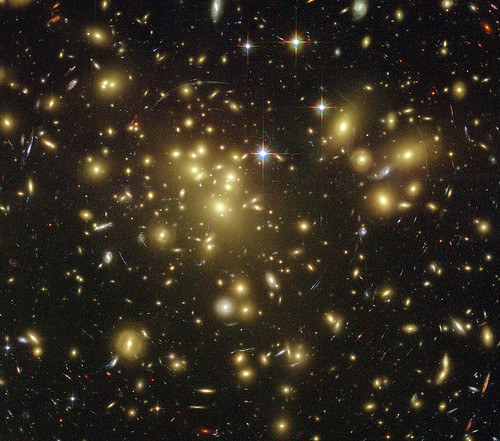Universe In A Baby Bust: Star 'Birth Rate' In Decline

Much of the world is in an economic downturn, and a number of First World countries are seeing their birth rates decline. Turns out this trend is just part of an even broader depression: The universe is making new stars at just one-thirtieth of the rate it used to, and there's nowhere to go but down.
"You might say that the universe has been suffering from a long, serious 'crisis': cosmic GDP output is now only 3 percent of what it used to be at the peak in star production!” astronomer David Sobral said in a statement.
Sobral, from Leiden University in the Netherlands, is lead author of a paper describing the phenomenon that appeared in the Monthly Notices of the Royal Astronomical Society.
Stars first began to form about 13.4 billion years ago, roughly 300 million years after the Big Bang. Astronomers think this early star-forming period was an especially fertile one, spawning stars hundreds of times bigger than our sun. But the candle that burns bright burns shorter, after all, and these celestial behemoths quickly exhausted themselves and exploded within about a million years. The debris from these supernovae was recycled into a new generation of stars, and the process repeated itself – our own sun is thought to be a member of the third generation.
Sobral and his colleagues used telescopes to survey various star-forming galaxies. The researchers looked at the galaxies from different distances, meaning they could see the same galaxy at different points in time. This allowed the scientists to understand how these star-forming regions evolved over time.
They found that star production has been on a continuous downturn for the last 11 billion years. About half of the stars that currently exist were born in the stellar equivalent of a baby boom that took place between 11 and 9 billion years ago. The other half of current stars have taken about 10 billion years to form.
Extrapolating from this, Sobral and his fellow researchers say that if the trend continues, then the universe is already on the tail end of its fertility, having made 95 percent of the stars that will ever be created. The future of the universe is one dominated by an aging star population.
Sobral, for his part, chooses to look on the bright side of this dim picture.
“The future may seem rather dark, but we're actually quite lucky to be living in a healthy, star-forming galaxy which is going to be a strong contributor to the new stars that will form."
SOURCE: Sobral et al. “A large H-alpha survey at z = 2.23, 1.47, 0.84 & 0.40: the 11 Gyr evolution of star-forming galaxies from HiZELS*.” Mon. Not. R. Astron. Soc. published 7 November 2012.
© Copyright IBTimes 2025. All rights reserved.





















